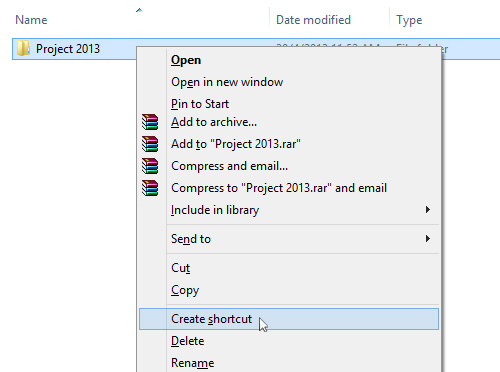Hi,

Open Finder and select the items (s) you want to create a shortcut for. Hold down the Option+Command keys, and then drag & drop the item (s) to the folder you want to create the alias/shortcut in. This method is the only one where you can create a shortcut in your preferred location in one step. Related: Alt code shortcuts for Mac. Fortunately Apple’s macOS provides an option to create a shortcut for any menu items of an application which does not have default shortcut keys. In this article we will discuss how to create custom keyboard shortcut in macOS. Check out our article on complete list of macOS Keyboard shortcuts. Create AutoCorrect Shortcuts in Office 365 Mac Similar to Windows Office version, you can also easily setup custom AutoCorrect shortcuts in Office 365 Mac version. Open Word or any other app and navigate to “Preferences” section by pressing “Command +,” keys. Click on “AutoCorrect” option. Jan 13, 2021 Open the Shortcuts tab. Make sure App Shortcuts is selected on the left. Click + under the list of current application keyboard shortcuts. Choose the program for which you are creating the custom Mac keyboard shortcut under Application. Note: Do select All Applications if you want the shortcut to work across all programs. Remember, though. From MacOS, go to the Apple menu and choose “System Preferences” and then go to the “Keyboard” preference panel Choose the “Shortcuts” tab and then select ‘App Shortcuts’ from the left side menu Click on the “+” plus button to create a new keyboard shortcut on the Mac.
How To Create A Desktop Shortcut
First off, putting stuff (links/aliases, files, folders) on a Mac Desktop is not good practice, because it leads to some extra work on the CPU, since the Desktop is a folder like others, OS X will index all its content every time your Mom starts her Mac.
This said, the best way to make an alias easy to use is to place it in the Dock via drag-n-drop, not on the Desktop. If placed in the Dock, your alias will always be within reach. All you have to do is locate the server folder you want to share in the Finder, and drag it to rightmost part of the Dock, where there are already some folders such as Applications, Documents, Downloads, etc...
Alternately, you can also create a new Shared item in the left pane of your main Finder window. In the Finder preferences, you can also choose to show all connected servers on the Desktop, which can come in handy too.
You may have to restart the Finder (or reboot the Mac, or just log out and back in) for the latter to take effect.
Oh, I almost forgot: you can also copy and paste the folder in question in the Desktop folder (left pane in the Finder main window), and it'll appear on the Desktop itself.
Oct 26, 2013 2:19 AM
People who like to use keyboard may be disappointed when they do not find a menu item does not have a keyboard shortcut. It will also become unproductive to repeatedly use menu items instead of using shortcut keys. For example, when you are creating a document in Pages how many times you undo things from the menu option “Edit > Undo”? Obviously you tend to use “Command + Z” though you are not an expert in using keyboard shortcut keys.
How To Make A Shortcut On Macbook Pro To Google Photos
Related:Alt code shortcuts for Mac.
Fortunately Apple’s macOS provides an option to create a shortcut for any menu items of an application which does not have default shortcut keys. In this article we will discuss how to create custom keyboard shortcut in macOS. Check out our article on complete list of macOS Keyboard shortcuts.
Create Custom Shortcuts for Menu Items
The process has the four steps:
- Access preferences.
- Create app shortcuts.
- Choosing app and menu.
- Using the shortcut in app.
Let us explain each of the step in detail.
Step1 – Open Keyboard Preferences
Click on the “Apple” icon located on top left corner of your Mac and choose “System Preferences…” menu. Click on “Keyboard” option.
Step2 – Creating App Shortcuts
Select “App Shortcuts” from the left panel available under “Shortcuts” tab then click on the “+” button.
Step3 – Choosing App and Menu
You will see a fly out screen showing the option to select / type “Application”, Menu Title” and “Keyboard Shortcut”. Assume you want to create a shortcut key for “Pages” app for the menu “View > Show Word Count”. This is a useful option to show word count figure down the document when typing and does not have a default shortcut.
In the fly out screen, select / type the following details:
- Application – choose “Pages” from the dropdown.
- Menu Title – type the menu item “Show Word Count”.
- Keyboard Shortcut – enter the shortcut key you want, for example we enter F10 here.
Important Point When Choosing Shortcuts
- Ensure to select the menu title as exactly shown in the application menu.
- You can select shortcut keys as a combination, function keys or a single key. Examples: F10, , ⌘⌃, ⌥⌘B.
- After creating the shortcut, you can edit anytime just by clicking on it in the “App Shortcuts” preferences.
Step4 – Using Shortcut in the App
Now open the Pages and check the “View” menu and you will see the shortcut you created “F10” will be showing next to the menu “Show Word Count” as shown below.
Pressing F10 will show the word count down the page. Select key combination which is already not existing for another menu item. Choosing duplicate shortcuts will do both the actions when used. For example, in the above example, if you have selected ⌘Z as shortcut keys then both “Undo” and “Show Word Count” function will work in the Pages app.
